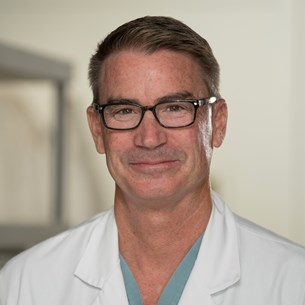Meeting
2017 ASCO Annual Meeting

University of California, Los Angeles, Los Angeles, CA
Frederick C. Eilber , Kamalesh Kumar Sankhala , Sant P. Chawla , Victoria S. Chua-Alcala , Erlinda Maria Gordon , Doris Quon , Katherine Kim , Shanta Chawla , Nancy Wu , Scott Wieland , Daniel J. Levitt
Background: Aldoxorubicin (A) has demonstrated superior anti-tumor efficacy and lack of cumulative cardiac toxicity in multiple studies. A is doxorubicin (D) with a linker which rapidly binds in vivo to albumin after iv. We studied the combination of A administered on Day 1 with continuous infusion (CI) of ifosfamide/Mesna (I-M) days 1-14, as first line therapy or second line therapy in patients with soft tissue sarcomas (STS) to evaluate efficacy and toxicity. Methods: 27 patients have entered the study at 250 mg/m2 ( 185 mg/m2 D equiv) administered on Day 1. I-M (1 g/m2 of each per day) was given up to 14 days as a CI via an out-patient portable pump. Chemotherapy cycles were repeated at 28 day interval. I-M was limited to a maximum of 6 cycles to avoid cumulative marrow toxicity, but A was continued per investigator decision in responding or SD patients for clinical benefit. Subjects were followed for tumor response (RECIST 1.1) by CT scans and echocardiogram/ECG for cardiac toxicity every 8 weeks along with standard labs. Enrollment continues up to 50 patients. Results: Demographics: Leiomyosarc. = 20%, liposarc. = 20%, synovial sarc. = 20%, rhabdosarc. = 8%, others = 32%. Caucasian, 11% Asian, 4% Black; 67% no prior tx, 26% 1 prior tx, 7% > 1 prior tx; Median cum. A = 1000 mg/m2 (740 mg/m2 D eq.; 185-4070 mg/m2 D eq.); I = 6.9 g/m2 (2.1-12.6 g/m2). Best response: 42% PR, 58% SD. Median PFS not reached. 10 subjects with either PR or SD had surgery to remove accesible tumors. Range of tumor necrosis = 70 to > 95%. Grade 3/4 AEs: neutropenia = 78%, febrile neutropenia = 9%, thrombocytopenia = 22%, anemia = 65%, nausea = 4%. Related SAEs = 4 (febrile neutropenia (2), pyrexia, stomatitis). No tx related deaths. No clinically significant cardiac AEs, no decrease in LVEF > 20% Conclusions: A can be administered for prolonged periods and safely with CI ifosfamide/mesna and achieves high ORR and SD with substantial tumor necrosis. Clinical trial information: NCT02235701
Disclaimer
This material on this page is ©2024 American Society of Clinical Oncology, all rights reserved. Licensing available upon request. For more information, please contact licensing@asco.org
2017 ASCO Annual Meeting
Poster Session
Sarcoma
Sarcoma
Soft Tissue Tumors
NCT02235701
J Clin Oncol 35, 2017 (suppl; abstr 11051)
10.1200/JCO.2017.35.15_suppl.11051
11051
374
Abstract Disclosures
2024 ASCO Annual Meeting
First Author: Qinglian Tang
2023 ASCO Annual Meeting
First Author: Allen Hodge
First Author: Igor Tsaur
2020 ASCO Virtual Scientific Program
First Author: Michael B. Livingston